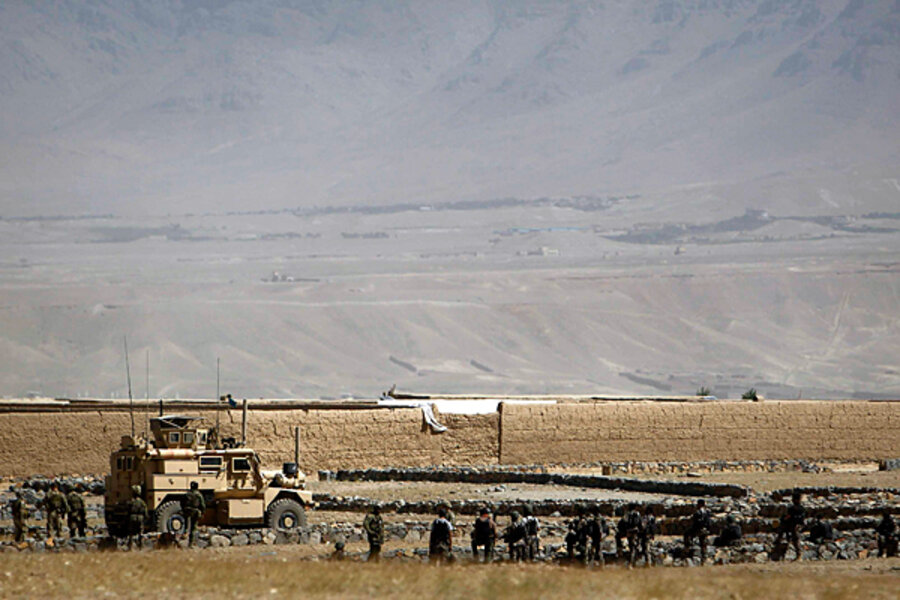Number of NATO forces killed by Afghan recruits hits new high
Loading...
• A daily summary of global reports on security issues.
For the sixth time in two weeks, a member of Afghanistan's fledgling security forces opened fire on his international trainers today, this time killing two US soldiers.
A local Afghan policeman in the far western province of Farah opened fire during the police inauguration ceremony attended by both American and Afghan national forces, shortly after receiving his weapon, USA Today reports. He joined the Afghan Local Police, a group of regional militias backed and trained by NATO, only five days earlier.
Additionally, three foreign troops were wounded today in Kandahar Province when a member of the Afghan security forces opened fire, CBS News reports.
The so-called green on blue attacks (for the color of the Afghan and international coalition forces' uniforms) have resulted in the deaths of 36 international soldiers in 2012 alone, according to USA Today (some news outlets reported higher numbers). They raise serious concerns about the viability of the plan to train Afghans to assume responsibility for security as the coalition forces' withdrawal in 2014 approaches.
There were only 11 such attacks in all of 2011 and only five in both 2009 and 2010.
NATO coalition forces say the attacks happen because of personal disputes, but yesterday the supreme leader of the Taliban, Mullah Mohammed Omar, implied that militants had gained admission to the security forces.
“Mujaheddin have cleverly infiltrated in the ranks of the enemy according to the plan given to them last year,” he said in the message marking this weekend’s Eid al-Fitr festival, the Washington Post reports. “They are able to [safely] enter bases, offices and intelligence centers of the enemy. Then, they easily carry out decisive and coordinated attacks.”
A coalition spokesman, Jamie Graybeal, told USA Today that attacks by insurgents in the security forces or by people recruited by insurgents account for only 10 percent of the attacks by Afghan members of the security forces. Screening of potential members has intensified.
The Telegraph reports on some of the steps being taken to combat the problem:
Up to 300 extra specialist counter intelligence personnel have been drafted into the Afghan Army to spot potential assassins.
The head of the Afghan Army has ordered that 150,000 soldiers – three-quarters of the force – be vetted again and be enrolled on a biometrics database.
Hundreds of soldiers who have shown signs of radicalisation, including travel to and from Pakistan, have been discharged.
CBS News reports that the incidents are eroding the trust that is essential to the NATO strategy of having international and Afghan forces work alongside each other as NATO trains local forces.
The trust between American forces and the Afghan police and soldiers they are training and supporting has been dealt such a blow by the green-on-blue attacks that the Pentagon instituted a "guardian angel" program early this year, whereby members of U.S. military units are picked to watch their fellow troops' backs as they eat, sleep or patrol with Afghan counterparts.








